

Forge Motorsport have a worldwide reputation of making industry leading parts for an array of performance vehicles; as such we’ve been able to work with some of most knowledgeable professionals in the tuning industry to produce the most versatile Audi RS3/RSQ3/TTRS performance intake on the market.
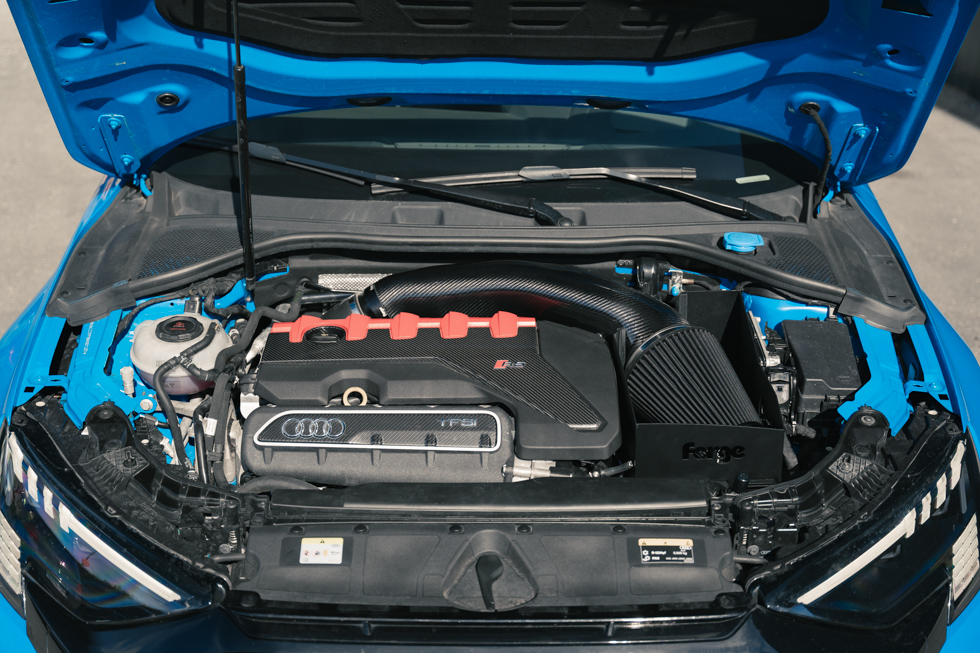
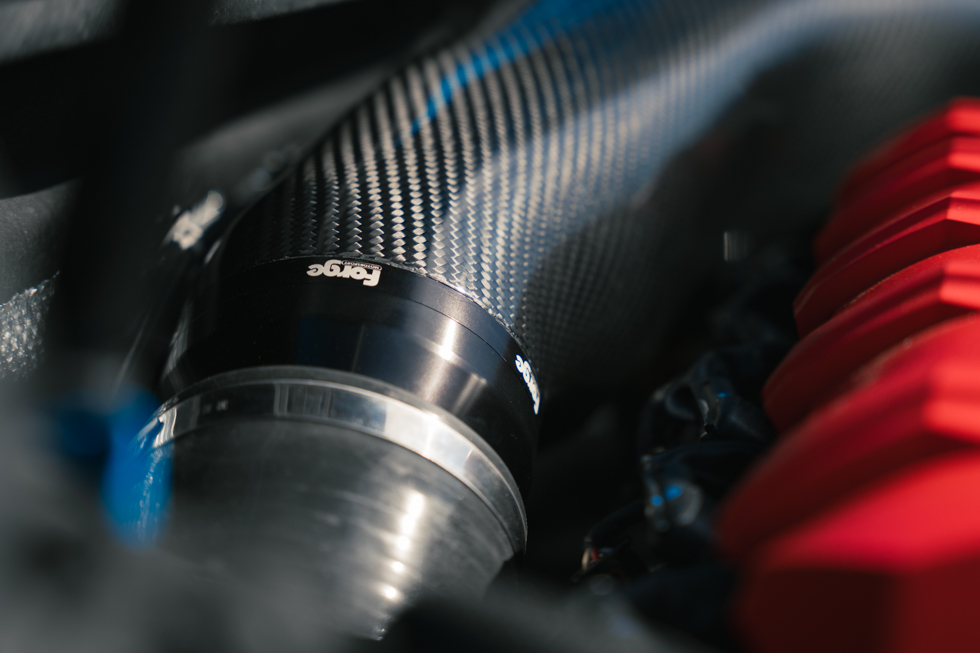
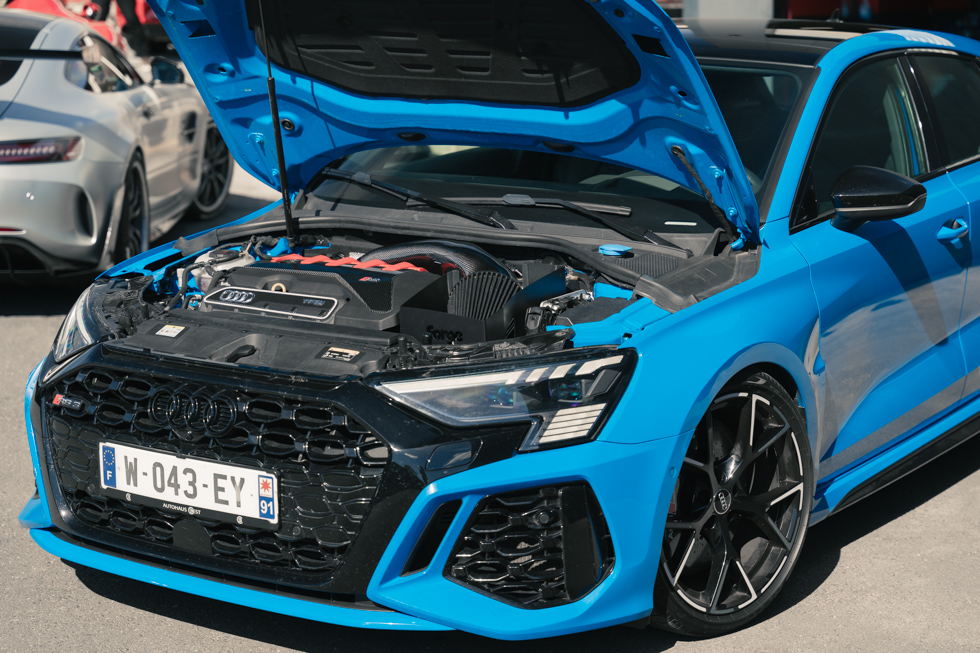
3
3D scans of left-hand drive (LHD) and right-hand drive (RHD) RS3 8Y’s and RS3 8V’s gave us 4 separate vehicle scans that we could then pull together into one file that has allowed us to create one intake that fits all 4 variations. So, no matter where you’re based in the world or whether you have an 8V or 8Y RS3, the Forge Motorsport FMINDK47 is the intake for you.
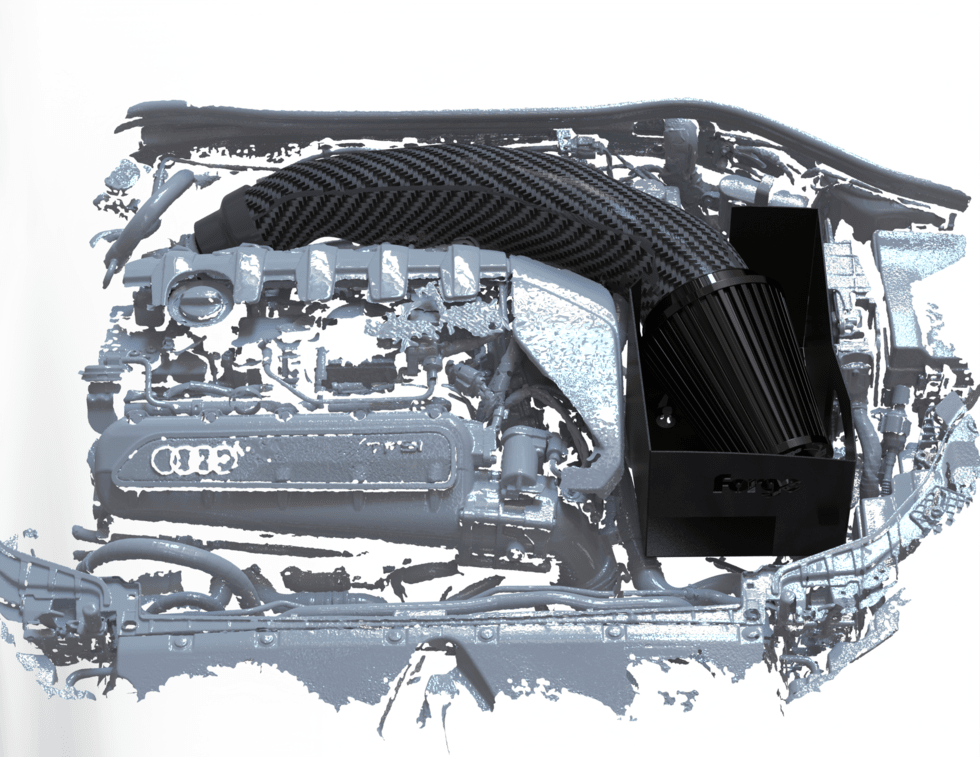
Trying to ensure that our performance intake is a one fit all solution also involved an understanding of how turbo inlets vary across the globe for the RS3 market. The OEM turbo elbow is an aluminium cast part with a 3” inlet tract that tapers down to the factory turbo charger cold side feed. Forge Motorsport offer and manufacture an upgraded silicone inlet elbow and turbo inlet adaptor (FMINLH9) not only to increase the area to the inlet tract but also the volumetric capacity. This has been increased to 3.5” and is the largest available product that fits RHD vehicles (due to space constraints with the brake master cylinder and is not physically possible to increase this size any further). However, this is not a problem on LHD vehicles, and as such there are various 4” variants available. To ensure our intake will work in conjunction with either the stock or any aftermarket inlet elbows on RHD or LHD vehicles we’ve incorporated an innovative solution that will be interchangeable if you wish to further enhance the engine performance of your Audi.
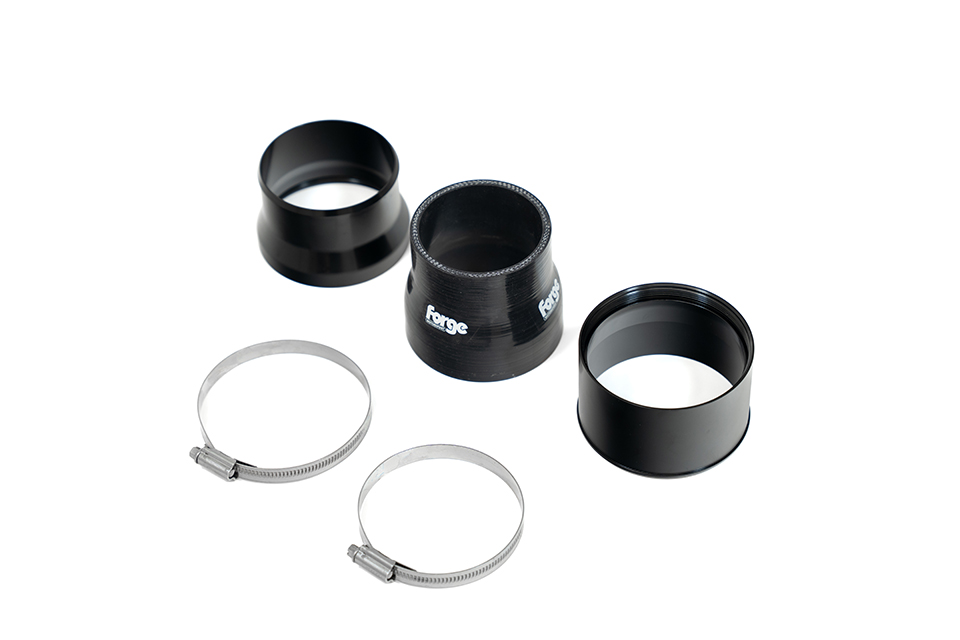
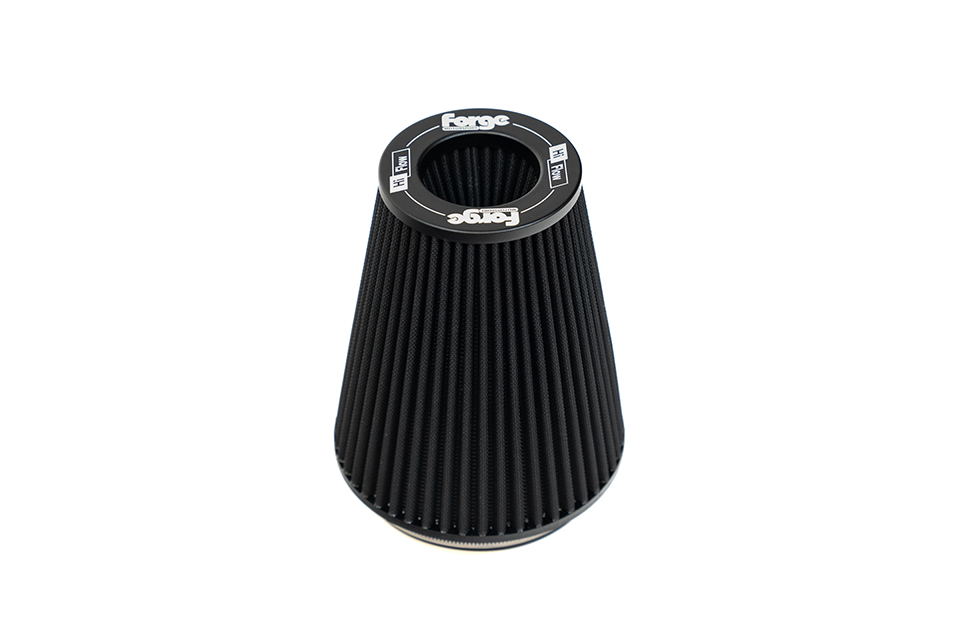
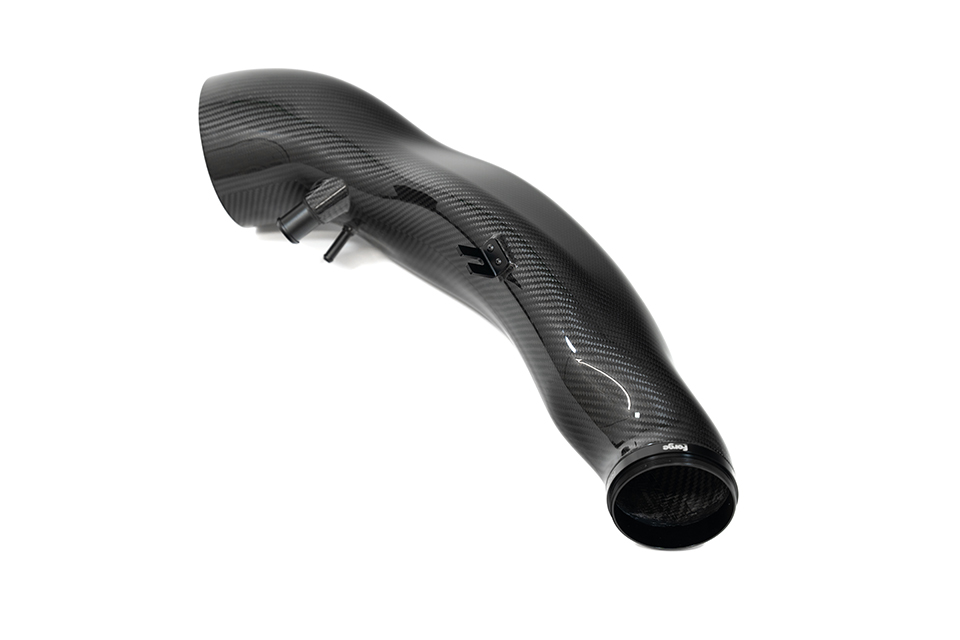
If you have the same as the image on the left, you will require FMBH8 to enable fitting of the Forge Motorsport Intake FMINDK47

FMINDK47 incorporates and includes modular couplers so that it can fit any size turbo inlet you may choose to run. The machined end of the carbon intake where it meets the inlet tract to the elbow has a 4”(102mm) threaded billet attachment which tapers up to the huge 6” pleated filter on the intake side. At this billet alloy junction, it enables the end user to have interchangeable adaptors. Having this amount of adjustment with a vast increase in airflow allows this product to be suitable for stock or aftermarket turbo inlet solutions whether manufactured from silicone or aluminium. This enables the enthusiast to interchange the adaptors depending on if its currently stock or modified. FMINDK47 will support your RS3 to literally any state of tune.
Keeping inlet air temperatures (IAT’s) low is often a difficult part of developing induction systems, and several different variations were tested with FMINDK47. We decided on keeping the OEM air inlet to feed a specifically designed heat shield which sits flush up to the bonnet. An opening on the side opposite to the engine also helps with vehicles running stage 3+, as there is indirect airflow to this area and during testing a fully closed airbox caused restrictions.
Using carbon fibre brings obvious benefits of strength, weight, and aesthetics. However, a part that is often forgotten is its low thermal conductivity, which means it reduces heat soak and transmission of heat to nearby items. Replacing metal or plastic inlet solutions for FMINDK47 will help decrease IAT’s and increase the volume of air supplied to your vehicles engine that is compressed by the turbo charger. This has a better effect on performance when cool as this is to provide the engine with more oxygen (denser air), thus improving the combustion in each cylinder. In addition, by regulating and reducing the air temperature, it also increases the reliability of an engine by keeping the AFRs (air fuel ratios) in each cylinder at a safe level, which in turn, can increase an engines power due to the air being cooler. A bigger bang is then created within the cylinder, providing the correct amount of fuel is added. This can equate to an increase in BHP and torque.
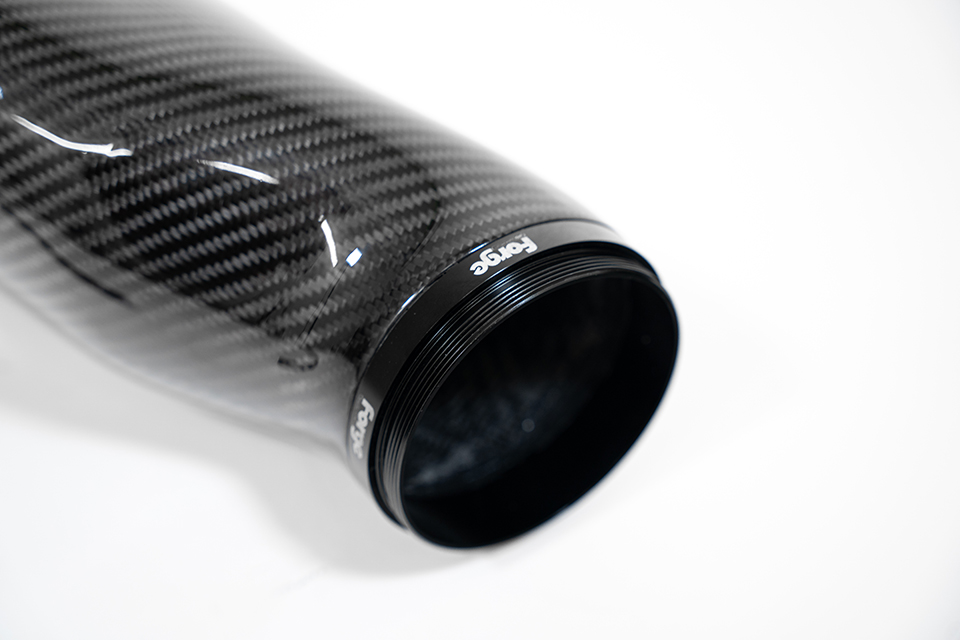
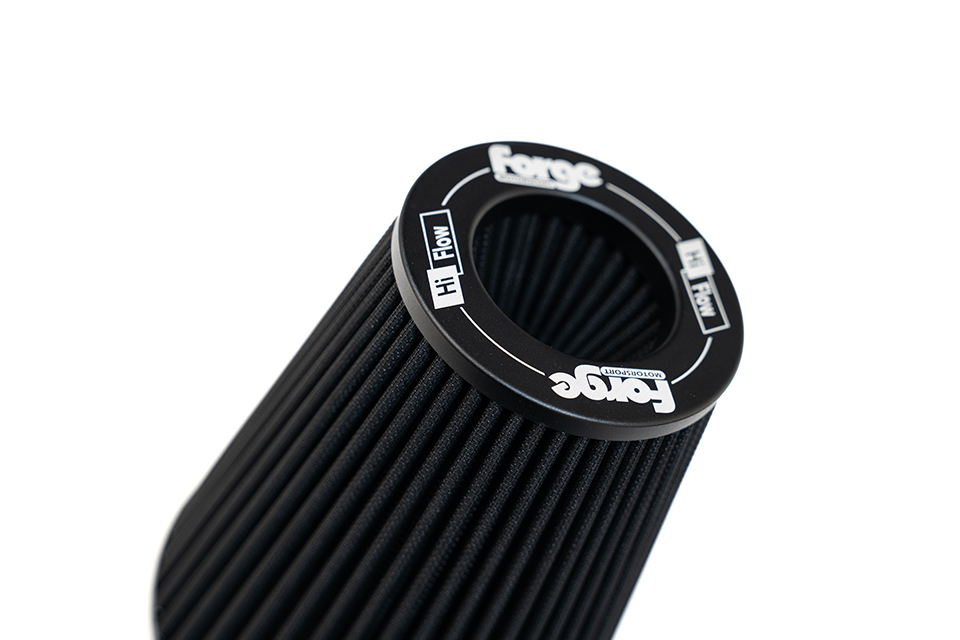
With a completely stock tune vehicle we were able to see peak gains of 6BHP. However further analysis of the dyno graph shows that this peak BHP figure was produced 200RPM earlier (6097RPM instead of 6298RPM). Additionally, the power curves were smoothed across the entirety of the rev range, with gains seen across the board. To pull out some snapshots from the rev range as examples, at 3000RPM using just FMINDK47 saw an increase of 25BHP, and at 4500RPM there was an increase of 17BHP. Torque figures saw similar gains across the rev range, with a peak torque figure increasing by 17NM at around 100RPM earlier. When we analyse the dyno graph across the rev range, at 3000RPM using just FMINDK47 saw an increase in 55NM and at 4500RPM there was an increase of 23NM.